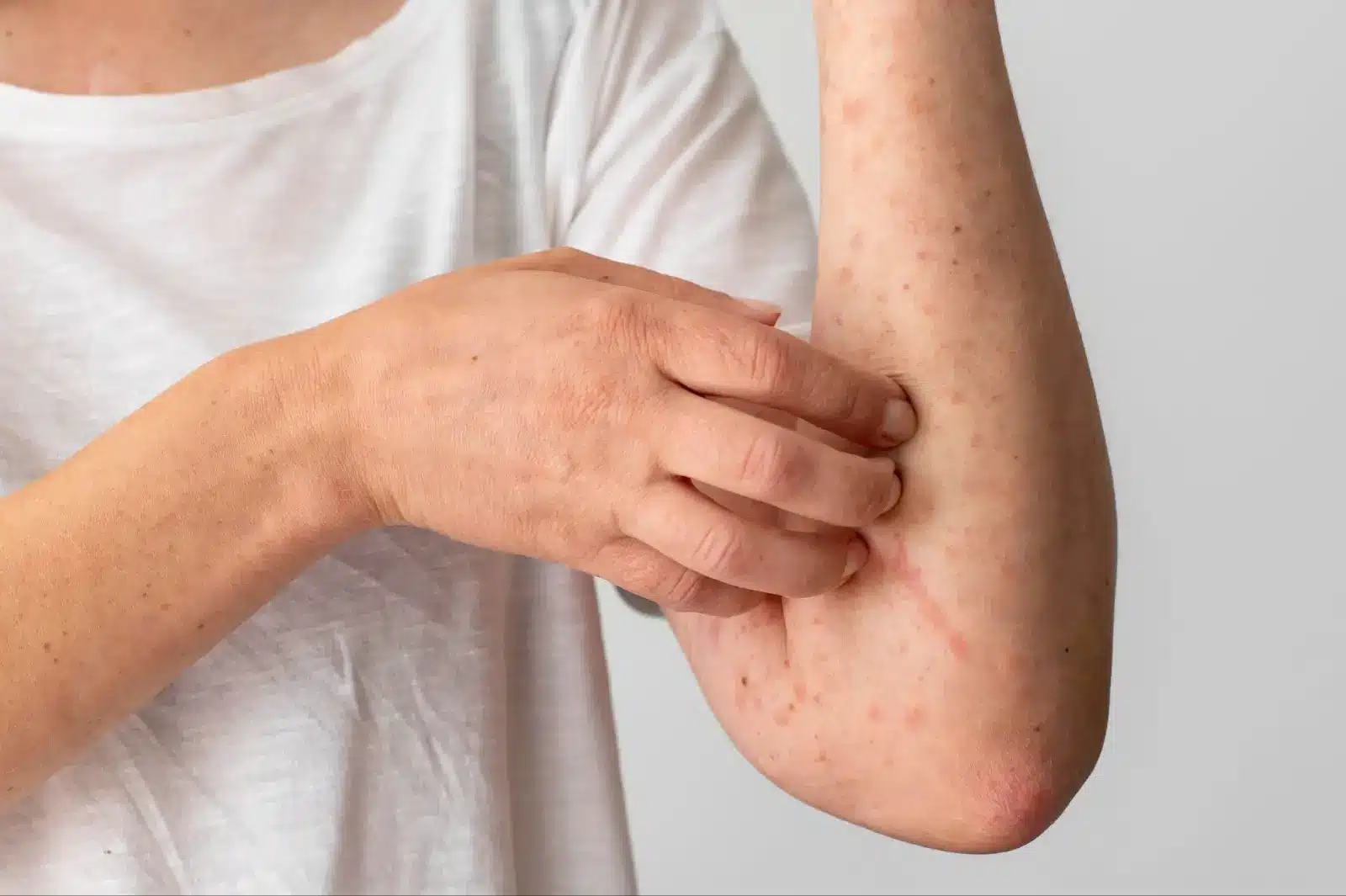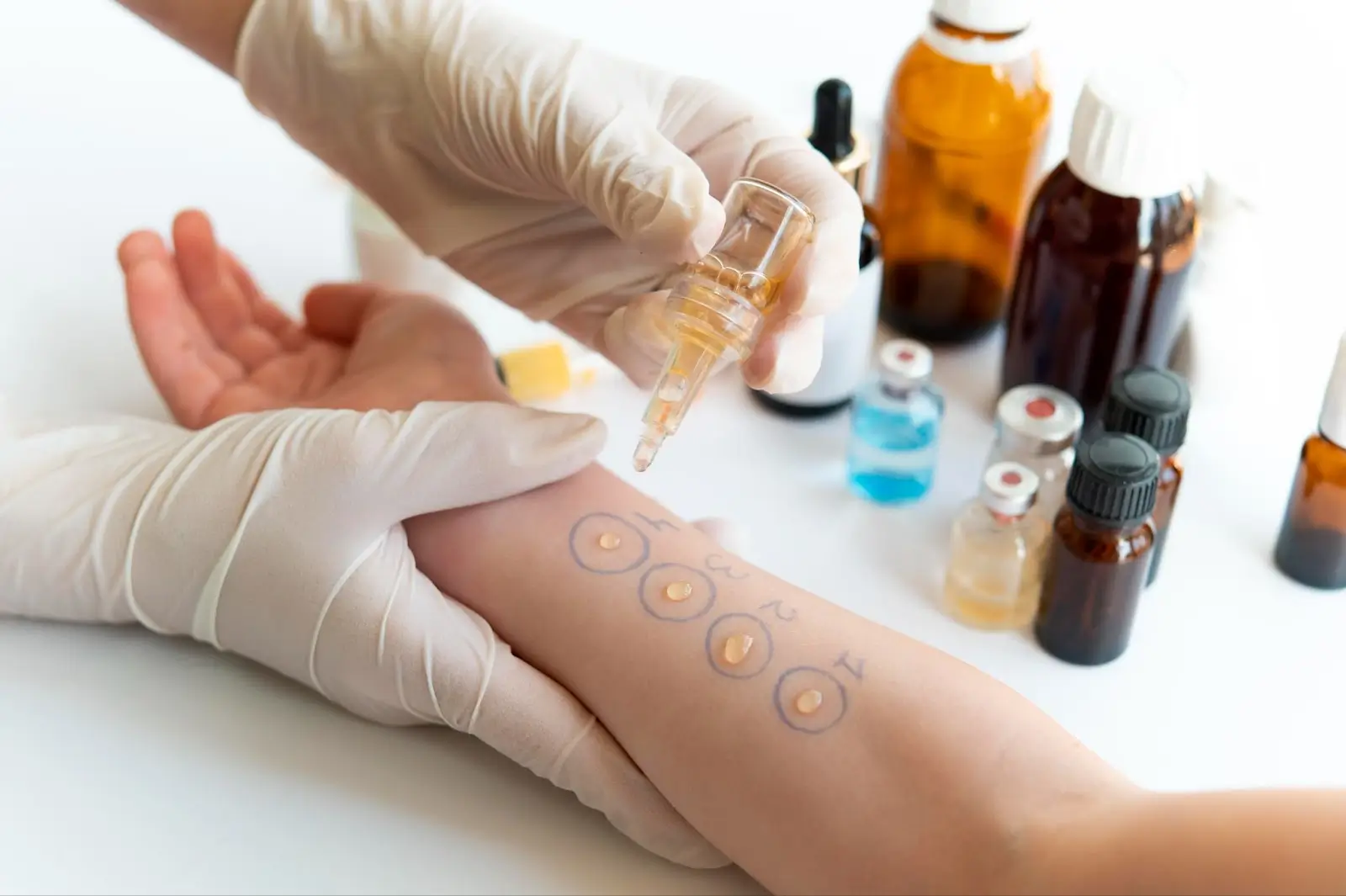Only for Licensed Professionals
Only for Licensed Professionals
.webp)
Side Effects of Gardasil Vaccine – The Complete List
Nina Petrovic
Last Updated On: July 29, 2025
A large review of over 41,000 HPV vaccine reports in Europe revealed four main groups of side effects: injection-site reactions, allergic responses, nervous system issues, and general symptoms. Among these, headache, dizziness, and fatigue stood out as the most reported, particularly in girls and young women, highlighting the importance of understanding how Gardasil may affect different people after vaccination.
Gardasil, a 9-valent HPV vaccine, is widely used to prevent cervical and other HPV-related cancers. Its safety profile is well established, with most reactions being mild and short-lived—like soreness at the injection site or tiredness. Still, it’s important to know that more serious side effects, while rare, can happen.
In this article, we’ll walk through the complete list of Gardasil side effects, from the most common to the rarest, and provide guidance on how to recognize, manage, and report any concerning reactions.
Key Takeaways
- Gardasil is a safe and effective vaccine widely used to prevent HPV-related cancers, with most side effects being mild and temporary.
- Common reactions include injection site pain (reported in ~80%), headache, fatigue, and low-grade fever. These all typically resolving within a few days.
- Syncope (fainting) is one of the more frequently reported events, especially among adolescents, making post-vaccine observation important.
- Serious side effects such as anaphylaxis (1.7 cases per million), neurological conditions, and autoimmune responses are extremely rare and closely monitored.
- Gardasil is safe across the approved age range (9–45 years), with strong evidence supporting its use in adolescents, adults, and special populations.
- Post-marketing surveillance data from the CDC, WHO, and over 60 countries continue to confirm Gardasil’s strong safety profile globally.
- The benefits of HPV protection far outweigh the minimal risks, making Gardasil a trusted tool in preventive healthcare.
About: Operating since 2016, Med Supply Solutions is known for being one of the industry’s top and trusted suppliers of cosmetic and viscosupplementation products. If you’re interested in purchasing Gardasil online, please contact our sales department for more information.

Common Gardasil Side Effects: Injection Site and Systemic Reactions

Gardasil has earned a reputation for its strong safety record, but like any vaccine, it may cause side effects. Thankfully, most of them mild, short-lived, and completely manageable. These reactions are a normal sign that the body’s immune system is responding to the vaccine. When patients know what to expect, they’re more likely to complete the series with confidence.
- Injection-site Reactions: Pain at the injection site is by far the most common side effect. Other localized symptoms, such as redness, swelling, or mild inflammation (erythema), often show up within the first 24–48 hours. These reactions typically go away on their own and can be eased with a cold compress or over-the-counter pain relievers.
- Systemic Symptoms: Beyond the injection site, headaches affect up to 50% of people post-vaccination, while 10–13% experience a low-grade fever. Other general symptoms like fatigue, nausea, dizziness, or mild muscle aches can also occur, but they usually last just a day or two. These are signs the immune system is doing its job.
Healthcare providers often recommend keeping patients under observation for 15 minutes after the injection, especially teens, to monitor for fainting or lightheadedness. Clear communication about these mild effects can reduce anxiety and support completion of the full vaccination schedule.
Serious or Rare Adverse Events Reported with Gardasil
Although serious side effects from Gardasil are extremely rare, ongoing safety surveillance systems help identify, investigate, and provide context for these unusual reports. Understanding these rare events, alongside their actual frequency, helps reassure patients and guide informed conversations.
- Syncope (fainting): One of the more commonly reported serious events, syncope occurs primarily in adolescents. VAERS aggregate analyses suggest that 15–25% of adverse event reports for Gardasil involve syncope, sometimes with dizziness or brief twitching movements. While alarming, these episodes are almost always benign and can be prevented by simply having patients sit or lie down for 15 minutes after the shot.
- Allergic Reactions: Severe allergic responses like anaphylaxis, hives (urticaria), or bronchospasm are extremely rare. According to CDC and WHO estimates, anaphylaxis occurs in about 1.7 cases per million doses (or 0.17 per 100,000). Patients with a known yeast allergy or prior severe vaccine reaction should be screened before receiving Gardasil.
- Neurological Events: A few reports have linked Gardasil with rare neurological events such as Guillain–Barré syndrome (GBS), acute disseminated encephalomyelitis (ADEM), and transverse myelitis. However, significant studies and health authorities have not found any causal connection between these conditions and HPV vaccination.
- Autoimmune Signals: Some post-marketing surveillance data have noted autoimmune events, including autoimmune hemolytic anemia and idiopathic thrombocytopenic purpura (ITP). Importantly, these reports remain within expected background rates, meaning they’re just as likely to occur in unvaccinated populations.
When considering the full Gardasil age range, from age 9 through 45, the vaccine’s protective benefit against multiple HPV-related cancers vastly outweighs these very rare risks. Continued monitoring ensures Gardasil remains one of the most closely watched and safest vaccines in use.
Gardasil Safety in Adolescents, Adults, and Special Populations

Over the years, Gardasil’s safety profile has been thoroughly evaluated in people of all ages and health conditions—from healthy adolescents to adults with complex medical histories.
- Adolescents (9–26 years): Most clinical trials for Gardasil have focused on teens and young adults. Across these studies, no increase in serious adverse events was seen when compared to a placebo. Although fainting was common, it wasn’t specific to Gardasil—it’s a known occurrence after many injections, especially among teens.
- Adults (27–45 years): Gardasil’s FDA approval for adults up to age 45 was based on strong safety data. In this group, tolerability was similar to that of younger people. No new or unexpected risks emerged during these extended evaluations, making Gardasil a safe option for late starters and catch-up schedules.
- Special populations: Though limited, available data for pregnant and immunocompromised individuals have been encouraging. Because Gardasil contains no live virus, it’s considered safe in these groups. Pregnancy registries have not shown any increased risk of birth defects or complications, and the CDC and WHO continue to support their use when appropriate.
Taken together, this evidence shows Gardasil is safe across age groups, and its use remains a vital tool in the prevention of HPV-related conditions worldwide.
Post‑Marketing Surveillance and Vaccine Safety Data on Gardasil
Real-world data paints a consistent and reassuring picture of Gardasil’s safety. In the United States alone, more than 135 million doses have been administered. According to the Vaccine Adverse Event Reporting System (VAERS) and Vaccine Safety Datalink (VSD), serious adverse events are rare: about 1.8 per 100,000 doses.
International health agencies echo these findings. The World Health Organization (WHO), which has reviewed Gardasil safety data from over 60 countries, found no link to multiple sclerosis or fertility issues. The most common side effects globally remain pain at the injection site and mild fever.
Other nations support this consensus:
- In Australia, national health data shows no rise in serious illness after widespread HPV vaccination.
- In Canada, electronic health records continue to affirm Gardasil’s safety across populations.
These long-term findings continue to support Gardasil’s strong risk-benefit profile, underscoring why it remains part of routine vaccination programs worldwide.
Conclusion
Although side effects like temporary pain, fatigue, or even brief fainting may occur, serious reactions to Gardasil are exceedingly rare. With robust global monitoring systems in place, healthcare providers and patients can make informed decisions with confidence.
Whether considering the vaccine for adolescents or adults up to 45, understanding the full Gardasil age range, possible side effects, and safety record ensures the best outcomes for everyone. With millions safely vaccinated, Gardasil continues to serve as a cornerstone of cancer prevention—protecting the future, one dose at a time.
FAQs
1. What are the most common side effects of the Gardasil vaccine?
Gardasil commonly causes pain at the injection site (up to ~80%), swelling or redness (~20–60%), mild fever, headache, nausea, dizziness, fatigue, and muscle or joint aches. These symptoms are usually mild and resolve within 1–2 days.
2. Why is fainting a concern after HPV vaccination?
Syncope (fainting) is more common among adolescents after Gardasil than after other vaccines. It typically occurs within minutes and is often accompanied by dizziness. Observation for at least 15 minutes post-vaccination helps prevent injuries from falls.
3. Has Gardasil been linked to autoimmune disease?
Occasional VAERS reports mention autoimmune events like hemolytic anemia or thyroiditis. However, large-scale surveillance, including more than 100,000 vaccinees, shows no significant elevation above the background incidence. No causal relationship has been established.
4. Is the Gardasil vaccine safe for adults aged 27 to 45?
Yes. Following expanded FDA approval, adults up to the age of 45 have shown similar safety and efficacy profiles to those of younger recipients. Shared clinical decision-making ensures that vaccination is appropriate for individuals without prior exposure to HPV.
References
Ward D, Thorsen NM, Frisch M, Valentiner-Branth P, Mølbak K, Hviid A. A cluster analysis of serious adverse event reports after human papillomavirus (HPV) vaccination in Danish girls and young women, September 2009 to August 2017. Eurosurveillance. 2019;24(19). doi:10.2807/1560-7917.es.2019.24.19.1800380
Side effects of Gardasil (HPV vaccine): interactions & warnings. MedicineNet. Published November 13, 2020. https://www.medicinenet.com/side_effects_of_gardasil_vaccine_hpv/side-effects.htm
Human papillomavirus (HPV) vaccine safety. Vaccine Safety. Published March 6, 2025. https://www.cdc.gov/vaccine-safety/vaccines/hpv.html
Safety of HPV Vaccines. WHO Weekly Epidemiological Record. https://www.who.int/groups/global-advisory-committee-on-vaccine-safety/topics/human-papillomavirus-vaccines/safety
Products
Cart
Log In
Newsletter
Subscribe for exclusive offers and updates on new arrivals
Share feedback at:
Working Hours
MON - SUN 9AM to 6PM EST
The Most Popular Brands
Med Supply Solutions
Support
Secure checkout is guaranteed with full adherence to PCI DSS payment standards.
Products listed here are guaranteed authentic and manufacturer-sourced.
Pay easily with trusted providers


*Google and Apple Pay are currently only available via a direct link provided by your account manager.
Copyright 2025. Med Supply Solutions